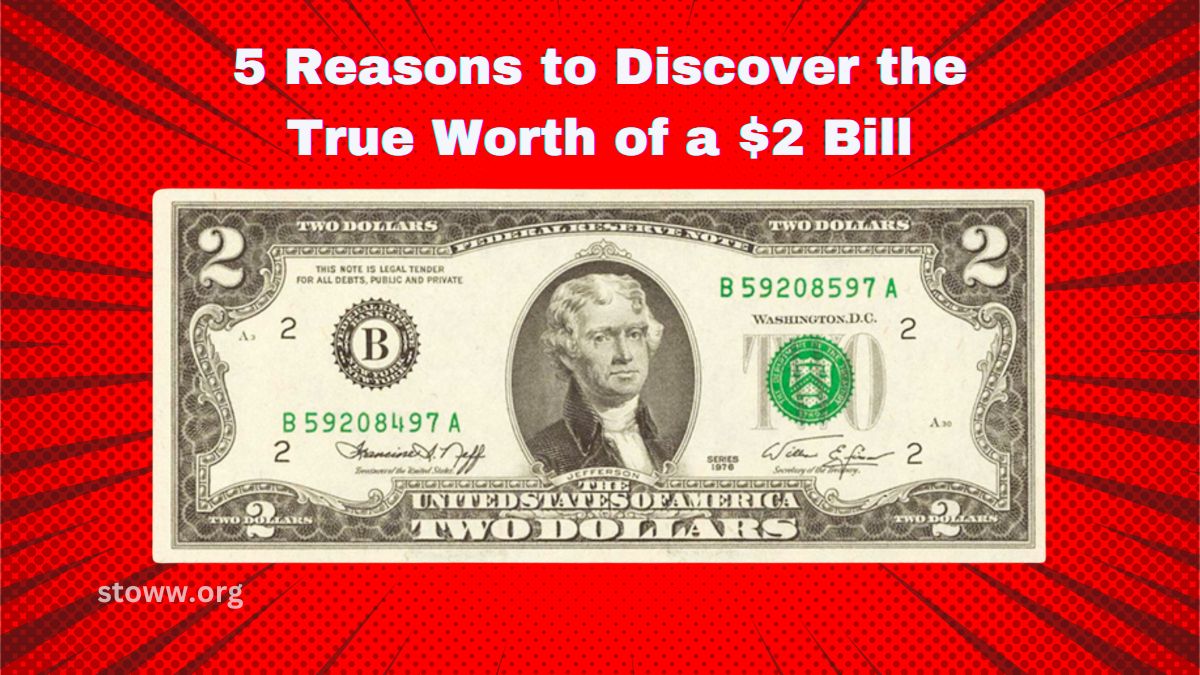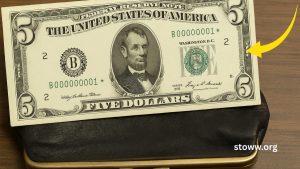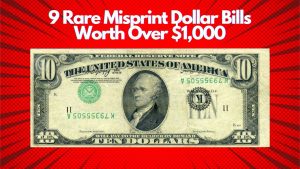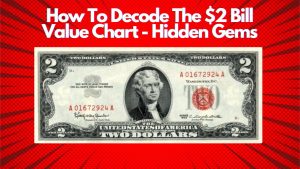While $2 bills are not commonly used in daily transactions, they are far more valuable than their face value suggests. Many people overlook the $2 bill, not realizing that certain rare editions, mint errors, or even historical significance could make them worth much more than expected.
Whether you’re a casual collector or a seasoned numismatist, discovering the true worth of your $2 bill could reveal hidden treasures that could be worth a significant amount. In this article, we’ll explore 5 key reasons why it’s worth taking a second look at the $2 bill.
1. Limited Production and Rarity
One of the main reasons the $2 bill is valuable is due to its limited production and rarity. The U.S. Mint has only produced the $2 bill intermittently over the years, which makes it much rarer than other bills in circulation. Since the bill isn’t used as often as $1 bills or $5 bills, it’s relatively uncommon to find one in everyday transactions.
Why It’s Valuable:
- Low Circulation: The $2 bill is not widely circulated, which makes it less common and more desirable to collectors.
- Rare Finds: Collectors are particularly interested in finding bills from certain years or in specific mint conditions, which drives up the value of these bills.
Approximate Value:
Up to $5 to $10 for bills in good condition, depending on the series and rarity.
2. Unique Designs and Historical Significance
The $2 bill is famous for its unique design, featuring Thomas Jefferson on the obverse and a depiction of the Signing of the Declaration of Independence on the reverse. The distinctive design and historical significance make this bill stand out from the rest of the currency in circulation.
Why It’s Valuable:
- Historical Appeal: The $2 bill is tied to American history, featuring an iconic image that commemorates the birth of the nation.
- Collector’s Item: The design makes it a favorite among collectors who appreciate both the artistic elements and the historical connection of the coin.
Approximate Value:
The value can increase significantly for bills in pristine condition or from limited series, often reaching upwards of $50 or more.
3. Special Series and Error Bills
Some $2 bills were issued in special series or contain errors that make them more valuable than regular bills. For instance, certain series such as the 1976 Bicentennial edition, or errors like misprints or misalignments, can add significant value.
Why It’s Valuable:
- Mint Errors: Misprints, such as off-center printing, folded notes, or serial number variations, can increase the bill’s value significantly.
- Special Editions: Bills issued during significant years, such as the Bicentennial or during periods of economic change, can also increase the bill’s worth.
Approximate Value:
Error $2 bills can be worth anywhere from $20 to $500, depending on the specific error and the bill’s condition.
4. High Demand from Collectors
While $2 bills might not be as widely circulated, they are highly sought after by coin and currency collectors. This is especially true for certain series of the bill, bills in excellent condition, and bills with unique serial numbers or errors. Over the years, the demand for $2 bills has grown, with collectors actively seeking them to complete their collections.
Why It’s Valuable:
- Collector’s Market: The collector’s market for $2 bills has expanded, with growing interest in specific bills.
- Increased Demand: As more people turn to currency collecting, bills from special series or with unique attributes are in high demand.
Approximate Value:
Depending on the condition, rarity, and collector interest, some $2 bills can reach values from $50 to $1,000.
5. Age and Condition Matter
Like all collectibles, the age and condition of a $2 bill play a significant role in determining its value. Older bills or those that have been kept in excellent condition (unfolded, without tears or wrinkles) can fetch significantly higher prices. Uncirculated bills in perfect condition are especially valuable.
Why It’s Valuable:
- Mint Condition: The rarer the bill in good condition, the higher its value. Bills that have been kept in pristine condition are considered more valuable by collectors.
- Age: Older $2 bills or those from older series are more valuable due to rarity and historical significance.
Approximate Value:
$2 bills in mint condition or from older series can range from $100 to $2,000 depending on the age and overall state of preservation.
5 Reasons Why the $2 Bill Is Valuable
| Reason | Details | Approximate Value |
|---|---|---|
| Limited Production and Rarity | Low circulation, not widely used | Up to $10 (common bills) |
| Unique Designs and Historical Significance | Iconic imagery and historical importance | Up to $50 (high-quality bills) |
| Special Series and Error Bills | Errors or special series increases value | Up to $500 (rare error bills) |
| High Demand from Collectors | Increased demand for certain bills and series | Up to $1,000 (collector’s items) |
| Age and Condition Matter | Older bills or those in excellent condition | Up to $2,000 (mint condition) |
FAQs
Q1: Why are $2 bills considered valuable?
A1: $2 bills are considered valuable due to their rarity, unique design, special minting errors, and historical significance. Bills in good condition or those with rare features can fetch much higher prices than their face value.
Q2: How do I know if my $2 bill is worth more than face value?
A2: To determine if your $2 bill is worth more, check for minting errors, unique serial numbers, or if it’s part of a special series (like the Bicentennial issue). Additionally, bills in pristine condition or from older series may be worth more.
Q3: How can I sell my rare $2 bill?
A3: You can sell your rare $2 bill through coin dealers, auction houses, or online marketplaces. It’s advisable to grade your bill through a professional service to get an accurate appraisal of its value.
The $2 bill may seem like just another piece of currency, but it holds a lot of value for collectors, especially those that are rare, historically significant, or error-prone. Whether it’s a bill from a special series or one with a minting flaw, discovering the true worth of a $2 bill could result in a substantial payday.



